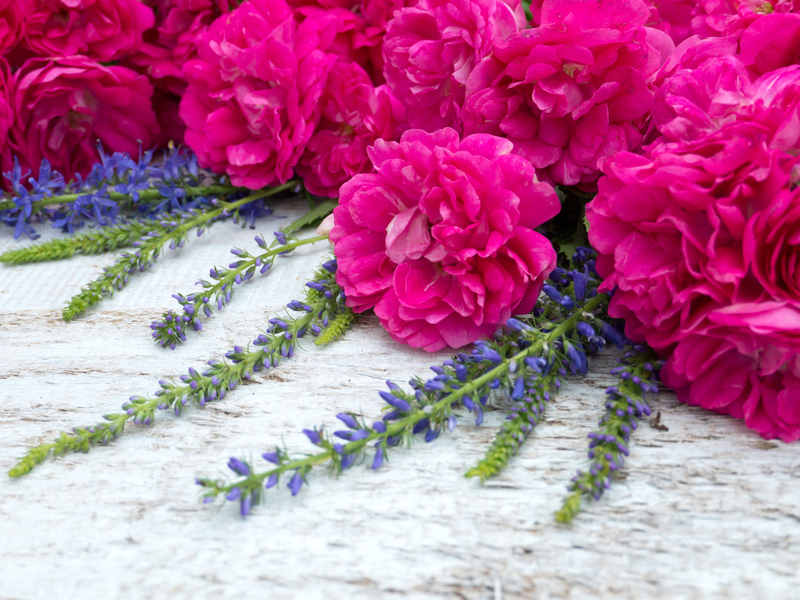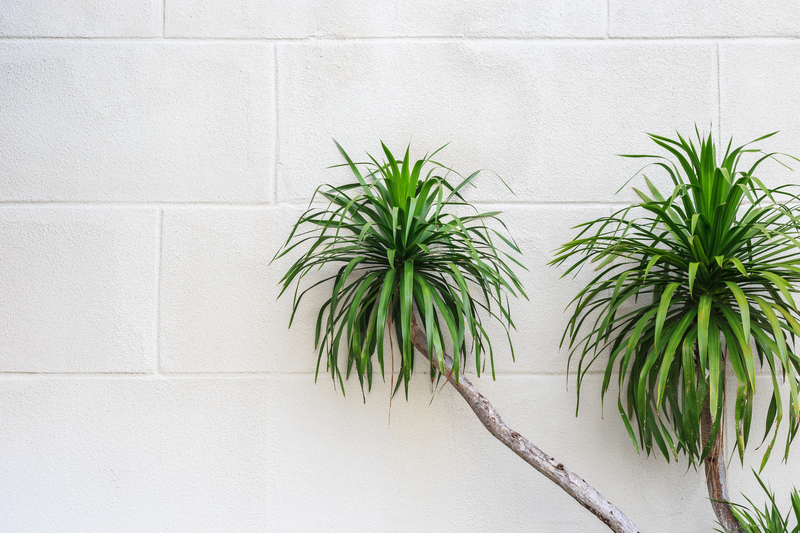How to Enjoy Gardening with Your Dogs
Posted on 04/10/2025
How to Enjoy Gardening with Your Dogs: A Joyful Guide for Pet Owners
Gardening is a cherished hobby for many, offering serenity, beauty, and a creative outlet. For dog lovers, the garden presents an even greater source of joy--a shared haven with their beloved pets. However, combining pets and plants requires thoughtful planning. Whether you're an avid horticulturist or a dog owner dreaming of a lush backyard paradise, gardening with your dogs can be immensely rewarding with the right strategies. In this comprehensive article, we'll reveal proven tips on how to enjoy gardening with your dogs, making your green space a joyful retreat for both you and your four-legged companions.
Benefits of Gardening with Your Dogs
Integrating your dog into gardening activities offers numerous advantages:
- Physical activity: Both you and your dog get exercise and fresh air.
- Bonding: Shared time outdoors strengthens your connection.
- Mental enrichment: Sniffing plants and exploring adds valuable stimulation for your dog.
- Stress relief: Gardening reduces anxiety for humans and pets alike.
- Pest control: Your dog's presence can discourage unwanted wildlife.
Let's explore how to maximize these benefits while ensuring safety and harmony in your gardening adventures.

Dog-Friendly Garden Design: Planning for Paws and Plants
1. Choose Durable, Dog-Proof Plants
When designing a dog-friendly garden, it's crucial to select resilient, non-toxic plants that can withstand occasional roughhousing or digging. Avoid species harmful to pets and opt for hardy options such as:
- Sunflowers (Helianthus annuus)
- Marigolds (Tagetes)
- Snapdragons (Antirrhinum majus)
- Camellias (Camellia japonica)
- Fuchsias (Fuchsia)
- Rosemary, sage, basil, and other herbs
Important: Never plant toxic plants for dogs like lilies, azaleas, sago palm, or daffodils. Always double-check new additions with a veterinarian-approved plant list.
2. Protect Your Plants from Playful Paws
Dogs love to dig, sniff, and sometimes trample plants in fits of excitement. To safeguard your greenery:
- Establish sturdy borders: Use rocks, short fences, or raised beds to define beds.
- Mulch safely: Choose pet-safe mulch such as cedar or pine; never use cocoa mulch, as it's toxic for dogs.
- Cluster delicate plants together: Position fragile blooms in less-visited corners or behind barriers.
- Pathways for paws: Incorporate clear paths of gravel, flagstone, or bark for your dog to roam.
3. Add Dog Zones and Features
Designate special areas where your dog can relax and play:
- Dog runs: Install a fenced area for zoomies or digging, filled with soft sand or mulch.
- Shade zones: Plant trees or set up shade sails to provide cool spots during summer.
- Water access: Include a dog bowl or splash pond to keep your pup hydrated.
- Viewing spots: Dogs love lookout points. Add a low platform for your pooch to survey the yard.
4. Safe Garden Materials
Ensure that your dog-friendly garden avoids hazards:
- No chemicals: Use organic fertilizers and pesticides, avoiding anything toxic.
- Non-toxic mulches and stones: Avoid cocoa shell and ensure rocks are too large to swallow.
- Secure tools: Always store sharp implements out of your dog's reach.
Training Your Dog for Garden Etiquette
Guiding your dog toward positive garden behavior not only keeps your plants safe, but also enhances your enjoyment. Here's how to train for a harmonious gardening experience:
Teach Basic Commands
- Leave it: Deters dogs from chewing or digging up plants.
- Stay: Helps keep dogs out of off-limits zones while you work.
- Go to bed/mat: Designate a spot for your pup to relax while you tend to delicate areas.
Introduce the Garden Gradually
Start with supervised visits, reinforcing good behavior with praise or treats. If your dog attempts to dig, gently redirect them to an approved digging pit or sandbox.
Positive Reinforcement is Key
Reward your dog for calm, gentle interactions with your gardening space. This reinforces their understanding and fosters long-term good habits.
Dog-Safe Gardening Activities: Involving Your Pet
Gardening can be a collaborative and fun experience. Here are some enjoyable gardening activities to share with your dog:
- Planting Together: Let your dog "supervise" or dig pre-appointed holes for planting, under your guidance.
- Harvest Time: Invite your pup to join in picking dog-safe fruits or veggies, like blueberries or carrots. (Always wash produce first!)
- Training Amidst the Blooms: Use the serenity of the garden as a backdrop for obedience sessions.
- Enjoying Rest Time: Relax together on a garden bench, enjoying the sights and scents.
- Obstacle Courses: Create playful agility paths with tunnels, low jumps, or cones using garden-safe materials.
Remember, involvement helps prevent boredom and reduces unwanted behavior, making your garden with dogs a source of shared happiness.
Best Plants for Dog-Friendly Gardens
Choosing the right flora is essential for safe gardening with dogs. Some of the most popular non-toxic, hardy choices include:
- Herbs: Mint, thyme, basil, rosemary, and parsley.
- Flowers: Sunflowers, snapdragons, marigolds, and petunias.
- Shrubs: Bottlebrush, camellias, magnolia, and hibiscus.
- Ground Covers: Irish moss, elfin thyme (provides a soft mat for paws), and clover.
- Vegetables: Carrots, green beans, peas, and sweet potatoes.
Dog-Friendly Edibles
- Blueberries
- Watermelon (seedless and in moderation)
- Strawberries
- Apples (cored and sliced)
Tip: Always monitor your dog to avoid overconsumption of even pet-safe plants.
Common Hazards and How to Prevent Them
While gardening with dogs is fun, be mindful of these common risks:
- Chemicals: Pesticides, herbicides, and synthetic fertilizers can be dangerous. Switch to organic garden solutions and keep your dog off treated areas for at least 24 hours.
- Mulch: As mentioned, never use cocoa mulch. Pine bark or cedar is safest.
- Toxic Plants: Check all plants for toxicity before purchasing.
- Sharp Tools and Debris: Rake up pruned branches and put tools away after use.
- Fencing and Escapes: Ensure your garden is securely fenced. Regularly inspect the perimeter for gaps.
If you suspect your dog has ingested something toxic, contact your vet or an emergency animal poison control center immediately.
Seasonal Considerations for Dog and Garden
Spring and Summer
- Hydration: Fresh water must always be available.
- Shade: Provide protection from intense sun.
- Pest Control: Use natural repellents to avoid fleas, ticks, and mosquitoes.
Autumn
- Leaf piles: Supervise play to avoid mold or hidden hazards.
- Fertilizing: Opt for pet-safe fall applications; keep dogs off treated lawns for 24+ hours.
Winter
- Watch for ice-melt chemicals: Avoid toxic salts.
- Provide shelter: Even for short outdoor play, create windbreaks or insulated spaces.
Fun Projects and Games for Gardening with Your Dog
Transform gardening tasks into play and learning opportunities:
- DIY Digging Pit: Designate a sandbox or loose soil patch as your dog's "dig zone." Bury toys or treats for a rewarding hunt.
- Obstacle Course: Use garden-friendly elements for agility play--tunnels, tires, or branches.
- Treasure Hunt: Hide dog-safe treats in approved areas among plants for scent-based enrichment.
- Cooling Station: Set up a shallow kiddie pool for your pup to splash in while you garden.
Dog Breeds and Garden Compatibility
Every dog is unique, but breed traits may shape your gardening approach. Retrievers, terriers, and working breeds often crave activity--provide outlets for energy to avoid plant mischief. Low-energy breeds may be content snoozing in the garden. Customize your routines to match your furry friend's personality!
Tips for First-Time Gardeners with Dogs
- Start small: Pilot your first season with a limited plot or container garden to test your dog's reactions.
- Observe closely: Watch how your dog interacts with different areas and plants.
- Adapt and adjust: Be ready to move or protect favorite plants as needed.
- Celebrate wins: Every successful garden walk or snooze on a sunny patch deserves recognition.

Conclusion: Growing Memories with Gardening and Dogs
Learning how to enjoy gardening with your dogs is more than just creating a safe outdoor space; it's about nurturing joyful moments, fostering companionship, and cultivating a shared appreciation for the wonders of nature. By designing a dog-friendly garden, choosing hardy and non-toxic plants, training your pet for good garden manners, and involving them in activities, you ensure a peaceful coexistence between paws and plants.
Invite your dog on this green adventure--dig, sniff, plant, and play together. The result? A backyard paradise teeming with life, laughter, growth, and sweet memories for both you and your loyal companion.
Frequently Asked Questions (FAQ): Gardening with Dogs
What plants are toxic for dogs and should be avoided?
Common toxic plants include lilies, azaleas, oleander, sago palm, foxglove, and daffodils. Always check a plant's safety before including it in your garden.
How do I stop my dog from digging up my garden?
Provide a designated digging area and reward your dog for using it. Use durable borders, positive reinforcement, and discourage digging in off-limits spots by redirecting your pet's attention.
Are there dog-friendly fertilizers and pesticides?
Yes--use organic, pet-safe fertilizers (like compost, manure, or bone meal, if used responsibly), and avoid chemical pesticides. Natural alternatives like neem oil and insecticidal soaps are generally safer.
Can my dog eat vegetables from the garden?
Many are safe, including carrots, green beans, and sweet potatoes (cooked and plain). Always wash produce and consult your vet about new foods.
How should I introduce my new puppy to the garden?
Supervise all early explorations, reinforce positive behavior, and set clear boundaries. Puppies are curious, so patience and consistency are vital.
Ready to start gardening with your dog? With thoughtful planning, you and your pup can enjoy a vibrant, secure, and beautiful outdoor sanctuary--together!

